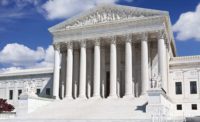EPA said, “Any final regulatory action related to the jurisdiction of the Clean Water Act in a rulemaking will be based on the final version of this scientific assessment, which will reflect EPA's consideration of all comments received from the public and the independent peer review.”
Dalal Aboulhosn, a senior Washington representative with the Sierra Club, said in an emailed statement that in the wake of the Supreme Court rulings, “There has been frustration and confusion [among] the public, industry, state agencies and others on how to implement water permits.”
Aboulhosn added, “We are pleased to see the administration taking active steps in ending this confusion and restoring vital protections to our nation’s waters.”
Nick Goldstein, American Road & Transportation Builders Association vice president for environmental and regulatory affairs, notes that EPA and the Corps had drafted regulatory “guidance” on Clean Water Act definitions, which had been under review by other agencies. That guidance will be withdrawn from interagency review, according to EPA.
Goldstein says, “We have to give a little credit where credit is due—the rulemaking process is a better alternative to guidance, which is what they were trying to do.” He adds, “This is such a big issue, it’s not meant for guidance, because you are redefining the scope of the Clean Water Act.”
Goldstein says transportation construction officials are especially concerned about whether roadside ditches that fill with water will be considered federally regulated waters. He says industry’s questions include: “When is a ditch a water of the United States? When is it not? Do you need a permit to clean the ditch?”
He says, “When we talk about really defining a water of the U.S., what we’re afraid is the approach is going to be to sweep everything in and then work backwards through exemptions.”



Post a comment to this article
Report Abusive Comment